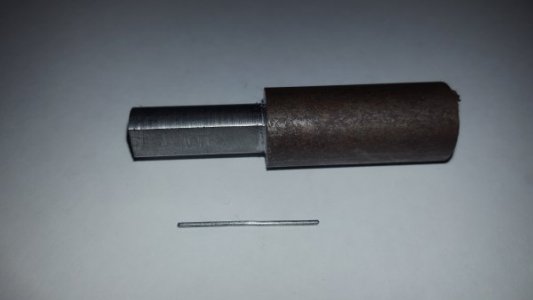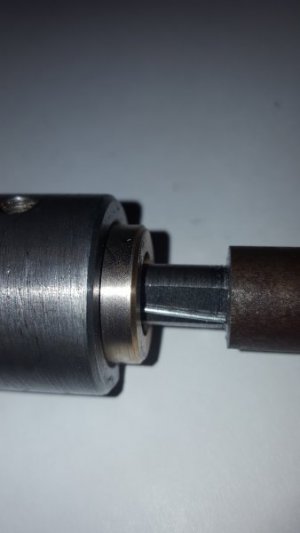Update on the lathe restoration: Back in Sept 2018, I gave up trying to make the leadscrew work for the tailstock and fabricated a lever action for it. That has worked OK, not ideal but better than nothing. With that complete, I have had a function machine lathe. Last month I was finally able to take the machine shop class at our local "Maker Space" which will allow me to use their machine shop when I need it. During the class, I had an opportunity to use their Grizzly lathe and it tailstock leadscrew. The experience convinced me that I needed to get the leadscrew on my lathe fixed. I had the leadscrew that came with the machine but no nut for the quill. The original lead screw is a 14 mm 8TPI left handed acme thread. That seems simple enough, unfortunately 8TPI is not a standard acme thread for 14mm. There are no nuts available in that size and there are no taps in that size. I talked with a number of people about this issue, including a local machine shop. Everyone agreed that cutting the male thread is no problem but cutting a female thread that size would be difficult without a tap.
I finally decide to bite the bullet and buy a matching left-handed acme thread and nut and replace the whole thing. I ordered and have received a 12 inch threaded rod 1/2 x 8TPI, left handed acme thread and a matching round nut. Unfortunately, the round nut was about .015 too big for the recess in the quill. No problem, I have a lathe, I can just turn it down. But wait, how do you hold a 1 inch nut so you can turn the entire length. I though of putting on the threaded rod and hold the rod in the chuck, but since it is a left handed thread it would spin away from the chuck. Next I though of making a couple of cone ends to thread onto a smaller bolt to hold the nut, which would have probably worked.
About this time I was reading through "The Shop Wisdom of Philip Duclos" and came across the article "Temporary Self-Locking Stub Mandrel". This was exactly what I needed, IF it would actually work on the threaded interior of the nut. If you have not seen it, it is an ingenious and simple means of holding a piece with a center hole. It took me about 30 minutes to make one for the nut. It consists of a shaft turned to be a close fit to the center hole of the piece to be held. Next file or mill a flat paralle to the axis of the mandrel. The flat needs to be just deep enough that a piece of wire will fit between the flat and the inner diameter of the piece to be help with about .002 clearance. Finally, holding the chuck rotate the workpiece clockwise to wedge the wire pin and lock the workpiece on the mandrel. All I needed to do was take two light passes and the nut was a good interference fit with the quill.
I was/am amazed at how simple and how effective this little trick was. I will be sure to keep it in mind as I continue to play with my lathe.
Now all that is left is to drill out the bearing bracket, machine the threaded rod to fit that hole, press the two together, and reassemble the tailstock leadscrew and its bearing and I will have a functioning tailstock with leadscrew. That will complete the "restoration" of this lathe. This has been an interesting project that I believe will allow me to build many other interesting projects.
Attached are two pictures: one of the mandrel and the locking pin and on of the mandrel and pin in the nut (after it had been turn to size and pressed into the quill)






